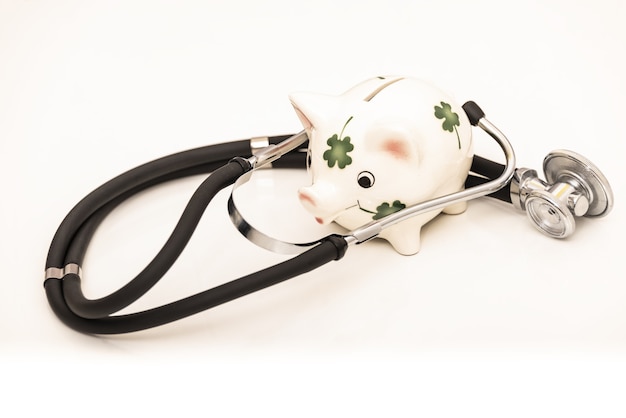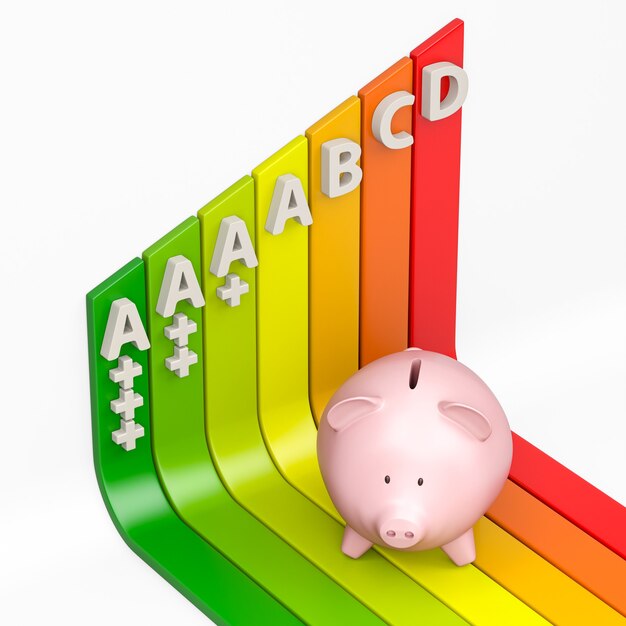Emergency Fund: Your Financial Safety Net in 3-6 Months

Building an emergency fund is crucial for financial stability, providing a safety net to cover unexpected expenses such as medical bills or job loss, aiming to save 3-6 months of living expenses for peace of mind and financial security.
Are you prepared for life’s unexpected financial curveballs? Building an emergency fund is a cornerstone of sound financial planning, ensuring you can weather storms without derailing your long-term goals. Let’s explore how to create this vital safety net.
Why You Urgently Need an Emergency Fund
An emergency fund is more than just a savings account; it’s a lifeline that protects you from debt and stress. Understanding its importance is the first step to achieving financial security.
Life is unpredictable. Whether it’s a sudden job loss, a medical emergency, or an unexpected home repair, having an emergency fund can provide you with peace of mind.
The Cost of Not Having an Emergency Fund
Without a financial cushion, you might turn to credit cards or loans, accumulating debt that can take years to repay.
The Psychological Benefits
Knowing you have funds available in case of emergency reduces stress and allows you to focus on your goals.

- Avoid accumulating high-interest debt.
- Reduce stress and anxiety about finances.
- Maintain your long-term financial goals.
Having an emergency fund is not just about money; it’s about your overall well-being, providing a financial safety net for unexpected events.
Calculate Your Monthly Living Expenses
Before you can start saving, you need to know how much money you actually need. Calculating your monthly living expenses is a critical step in determining your emergency fund goal.
Start by listing all your essential monthly expenses. This includes rent or mortgage payments, utilities, groceries, transportation, insurance, and any necessary medical expenses.
Distinguish Between Needs and Wants
Focus on essential expenses that are required for your basic survival and well-being.
Use a Budgeting App or Spreadsheet
Tools like Mint or YNAB (You Need a Budget) can help you track your spending and identify areas where you can cut back.
Gathering all financial information will help you in creating a budget.
- Track your spending for a month to identify patterns.
- Categorize expenses into fixed and variable costs.
- Calculate the total amount needed to cover essential expenses.
By accurately calculating your monthly expenses, you can set a realistic and achievable goal for your emergency fund, laying a solid foundation for financial stability.
Set a Realistic Savings Goal: 3-6 Months of Expenses
Now that you know your monthly expenses, it’s time to set a savings goal. Aiming for 3-6 months of living expenses is a common recommendation.
The ideal amount varies depending on your job security, income stability, and personal risk tolerance. A more stable job might require only 3 months, while those in uncertain fields might need 6.

Assess Your Job Security
Consider the stability of your job and the likelihood of unexpected unemployment. Factors such as your industry, company performance, and skill set influence your job security.
Consider Other Sources of Income
If you have additional income streams, such as freelance work or investments, you might need less in your emergency fund.
Evaluate your situation and adjust accordingly.
- Determine your personal risk tolerance.
- Assess your job security and income stability.
- Adjust your savings goal based on your individual needs.
Setting a realistic savings goal will give you a target to aim for, making the process of building your emergency fund more manageable and less overwhelming.
Open a Dedicated High-Yield Savings Account
Where you keep your emergency fund is almost as important as how much you save. A dedicated high-yield savings account is an excellent choice.
These accounts offer higher interest rates than traditional savings accounts, helping your money grow faster. Look for accounts that are FDIC-insured to protect your funds.
Compare Interest Rates and Fees
Shop around for the best rates, and be aware of any fees or minimum balance requirements.
Ensure Easy Access to Funds
While you don’t want to be tempted to spend your emergency fund, you need to access it quickly in case of an emergency. Verify the withdrawl process is fairly easy.
Research which savings account will work best for you.
- Compare interest rates from multiple banks.
- Check for FDIC insurance coverage.
- Ensure the account allows easy and quick withdrawals.
Choosing a high-yield savings account can maximize the growth of your emergency fund while keeping it safe and accessible, making it a smart move for long-term financial security.
Strategies to Save Efficiently
Saving money can be challenging, but with the right strategies, you can efficiently build your emergency fund.
Automate your savings by setting up automatic transfers from your checking account to your savings account each month. Even small amounts can add up over time.
Cut Unnecessary Expenses
Identify areas where you can reduce spending, such as dining out, entertainment, or subscriptions.
Utilize Windfalls Wisely
When you receive a bonus, tax refund, or other unexpected income, put a portion of it directly into your emergency fund.
Saving money takes dedication, here are more tips.
- Set up automatic transfers to your savings account.
- Track and reduce unnecessary expenses.
- Allocate windfalls directly to your emergency fund.
Implementing efficient saving strategies can help you reach your emergency fund goal faster, providing a crucial financial safety net when you need it most.
Refine Your Strategy and Stay Consistent
Building an emergency fund is a journey that requires ongoing effort. Regularly reviewing and refining your strategy will help you stay on track.
Revisit your budget and savings plan periodically to ensure they still align with your financial goals. Adjust your savings amount as your income or expenses change.
Adjust Savings Goals
If your income increases, consider increasing your monthly savings contribution. If expenses rise, look for additional ways to cut back.
Regularly Review Your Progress
Track your progress and celebrate milestones to stay motivated. Use budgeting apps or spreadsheets to monitor your savings.
Make sure to make the best decisions every step of the process.
- Regularly review and adjust savings goals.
- Track your progress and celebrate milestones.
- Stay disciplined and consistent with your savings plan.
Staying consistent and adapting your approach as needed will ensure you maintain a strong emergency fund, ready to protect you from unexpected financial challenges.
| Key Point | Brief Description |
|---|---|
| 💰 Start Saving | Gradually build your emergency fund with regular contributions. |
| 📊 Calculate Expenses | Determine monthly living costs to set accurate savings goals. |
| 🏦 High-Yield Account | Choose a high-yield savings account to grow your funds faster. |
| 🎯 Set Savings Goal | Aim for 3-6 months of living expenses based on job security. |
FAQ
▼
The general recommendation is to save 3-6 months’ worth of living expenses. Assess your job security, income stability, and personal risk tolerance to determine the right amount for you.
▼
A high-yield savings account is ideal. It offers higher interest rates than traditional savings accounts while keeping your funds easily accessible and FDIC-insured.
▼
Automate your savings, cut unnecessary expenses, and allocate any windfalls directly to your emergency fund to accelerate the savings process.
▼
If you use your emergency fund, prioritize replenishing it as quickly as possible. Adjust your budget temporarily to allocate extra funds towards rebuilding it.
▼
Review your strategy periodically, ideally every 6-12 months, or whenever your income, expenses, or job situation changes. Adjust your savings and goals as needed.
Conclusion
Building an emergency fund is a crucial step towards financial security and peace of mind. By calculating your expenses, setting a realistic savings goal, and implementing efficient saving strategies, you can create a safety net that protects you from life’s unexpected challenges. Start today and take control of your financial future.





